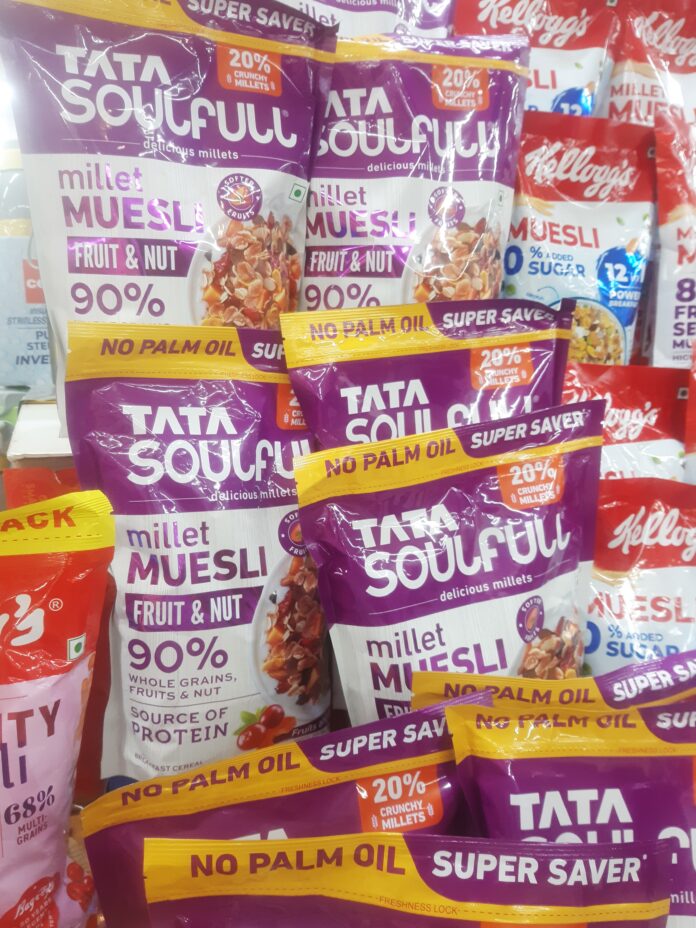
The GST rate cut on major food products is expected to reduce prices for almost all food products, thus promoting ease of living. Lower prices will boost demand for food products, expansion of investment, and employment generation, the government has said.
Correcting inverted duty structures boosts domestic value addition and exports and better revenue generation in the sector through a broader base and better compliance.
To simplify the goods and services tax, the GST Council in its 56th meeting has reduced the GST structure from four slabs (5%, 12%, 18%, 28%) to two main rates—5% (merit rate) and 18% (standard rate), along with a 40% special rate for sin/luxury goods. These changes come into effect from 22 September 2025, a PIB release said.
The food-processing sector has been a major beneficiary in this rationalization of tax rates with most products witnessing a decline to 5% GST slab.
This rationalization of GST to lower levels provides a variety of stimulants to the sector and encourages a virtuous cycle of economic growth through the following:
Simplified tax structure: The simplified tax structure brings uniformity across food items with a reduced number of tax slabs. A stable tax environment will help businesses plan long-term investments, encourage compliance, and drive economic growth.
Reduced prices: The consumers shall witness overall reduced food prices, making staples more affordable. This, in turn, stimulates consumer demands, and FMCG and packaged food businesses are expected to see an uptick in sales. Additionally, the simplification aids businesses by reducing compliance costs and lowering litigation risk.
Inverted duty structure: The new structure helps correct inverted duty cases e.g., when inputs were taxed higher than finished products. This provides immediate relief for strengthening the value chains in the food sector, improving liquidity, especially for MSMEs, reducing working capital blockage and promoting domestic value addition.
Resolving classification issues: The new structure eliminates classification disputes arising from varying tax rates for similar products. For example, packaged vs. loose paneer or parathas previously had different rates, but now follow a clearer structure and greatly reduce classification disputes.
Other procedural reforms: Besides rate cuts, the Council approved procedural reforms through streamlined registration and return filing, provisional refund mechanisms especially for inverted duty claims, and implementation of GSTAT (Goods and Services Tax Appellate Tribunal) to expedite appeal resolution and reduce litigation.
Boost to processed food industry: Overall, the manufacturing sector is set for a boost. The lower GST rates on consumer goods and the resultant lower prices could potentially set off a virtuous cycle of increased demand and growth for the industry.
The overall industry has the following positives:
Consumption: GST rate cuts will result in lower retail prices, which in turn will increase demand for manufactured products, including processed food products.
Investment: With increased demand and positive business sentiment and a reduction in compliance burden, investments are expected to rise.
Employment: With increased demand, expected rise in investment and formalisation of industry, more employment opportunities are expected to be generated in the sector and the economy as a whole.
Increased income level for farmers and food processors: The incomes and remunerations of the farmers and food processors are expected to rise by way of an increase in consumption and investment in the economy, increasing the food-processing infrastructure, level of processing and value addition and reduction in post-harvest losses.
GST rate cut
The major processed food products on which GST rates have been reduced are as follows:
Ultra-High Temperature (UHT) milk: Reduced from 5% to Nil
Condensed milk: From 12% to 5%
Almonds: From 12% to 5%
Malt, whether or not roasted: From 18% to 5%
Sugar boiled confectionery: From 12% to 5%
Sugar confectionery: From 18% to 5%
Cocoa butter, fat and oil and Cocoa powder: From 18% to 5%
Chocolates and other food preparations containing cocoa: From 18% to 5%
Pasta, whether or not cooked or stuffed (with meat or other substances) or otherwise prepared, such as spaghetti, macaroni, noodles, lasagne, gnocchi, ravioli, cannelloni; couscous: Reduced from 12% to 5%.
Pastry, cakes, biscuits and other bakers’ wares, whether or not containing cocoa; communion wafers, empty cachets of a kind suitable for pharmaceutical use, sealing wafers, rice paper and similar products: From 18% to 5%.
Extruded or expanded products, savory or salted: From 12% to 5%.
Vegetables, fruit, nuts and other edible parts of plants, prepared or preserved by vinegar or acetic acid: From 12% to 5%.
Jams, fruit jellies, marmalades, fruit or nut purée and fruit or nut pastes: From 12% to 5%.
Fruit or nut juices (including grape must) and vegetable juices: From 12% to 5%.
Soups and broths and preparations therefor; homogenised composite food preparations: From 18% to 5%.
Ice cream and other edible ice, whether or not containing cocoa: From 18% to 5%.
Namkeens, bhujia, mixture, chabena and similar edible preparations: From 12% to 5%.
Plant-based milk drinks, ready for direct consumption as beverages: From 18% to 5%.
Soya milk drinks: From 12% to 5%.
Fruit pulp or fruit juice-based drinks (other than Carbonated Beverages of Fruit Drink or Carbonated Beverages with Fruit Juice): From 12% to 5%
IndiFoodBev — authentic, impactful and influential
An English-language food and beverage processing and packaging industry B2B platform in print and web, IndiFoodBev is in its third year of publication. It is said that the Indian food and beverage industries represent approximately US$ 900 billion in revenues which implies more than 20% of the country’s GDP. Eliminating the wastage on the farmside can help to deliver more protein to a higher number of the population apart from generating sizable exports. The savings in soil, seeds, water, fertilizer, energy and ultimately food and nutrition could be the most immense contribution that country is poised to make to the moderation of climate change.
To improve your marketing and grow sales to the food and beverage processing and packaging industry, talk to us. Our research and consulting company IppStar [www.ippstar.org] can assess your potential and addressable markets in light of the competition. We can discuss marketing, communication, and sales strategies for market entry and growth.
Suppliers and service providers with a strategy and budget for targeted marketing can discuss using our hybrid print, web, video, and social media channels to create brand recognition linked to market relevance. Our technical writers are ready to meet you and your customers for content.
The second largest producer of fruit and vegetables in the world is continuously expanding processing capacities and delivery systems with appropriate innovative technologies. We cover product and consumer trends, nutrition, processing, research, equipment and packaging from farm to thali. Get our 2025 media kit and recalibrate your role in this dynamic market. Enhance your visibility and relevance to existing markets and turn potential customers into conversations. Ask for a sample copy of our bi-monthly in print or our weekly IndiFoodBev eZine each Wednesday.
For editorial info@ippgroup.in — for advertisement ads1@ippgroup.in and for subscriptions subscription@ippgroup.in
Naresh Khanna – 10 February 2025
Subscribe Now










